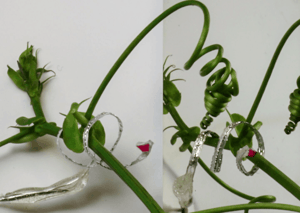The first flexible robot, capable of imitating the behaviour of tendrils and coiling around a support (just like the prehensile filaments of vines and other plants), has been created by researchers from the Center of Micro-BioRobotics of the IIT-Italian Institute of Technology in Pontedera (Pisa), guided by Barbara Mazzolai. The new prototype has been described by the researchers in the scientific journal Nature Communications, and in the future could also “inspire” other soft robots, capable of changing shape. Barbara Mazzolai is considered a pioneer in this field. In 2015 she was nominated as one of the 25 most innovative researchers in the world by the specialized website RoboHub, which gathers the work of a wide international scientific community of robotics experts.
Researchers from IIT “copied” several strategies used by plants that, being unable to move, attempt to continuously adapt their shape to their external environment. Tendrils, in particular, can reach and “grasp” external supports to facilitate their stability and the wellbeing of the plant itself. The researchers focused their attention on the natural mechanisms used by vines and other plants to exploit the shifting of water and salt molecules inside them, (osmosis) to move the filaments, and replicated them in the soft robot.
In the simplest of terms, we could say that the robot is made up of a thin PET tube (the common plastic used to make bottles), the inside of which has a liquid containing ions, i.e. electrically unstable atoms. Using a 1.3 volt battery, the ions are attracted and immobilized on the surface of flexible electrodes placed at the base of the soft-robot, and this triggers an osmotic process that causes the liquid to move and the coiling of the artificial tendril. The coiling effect is achieved by removing the effect of the battery.
“This is the first time”, say the researchers, “that the possibility of using osmosis to make reversible movements has been demonstrated. The fact that we have been able to do so using a simple battery and flexible tissue suggests that it is possible to create soft robots that can be easily adapted to the surrounding environment without damaging objects or living beings”.
The group coordinated by Barbara Mazzolai is also taking part in a new project, called GrowBot, financed by the European Commission, within the context of the “FET Proactive” programme. This project envisages the development of robots that are capable not only of recognizing the surfaces they can attach to or the supports they can anchor on to, but for them to do so while they are growing, adapting themselves to the surrounding environment. Just like true climbing plants in nature.

